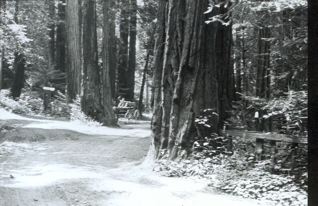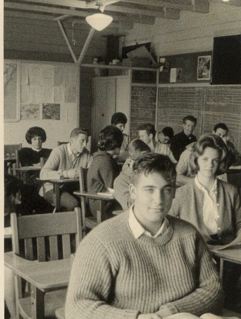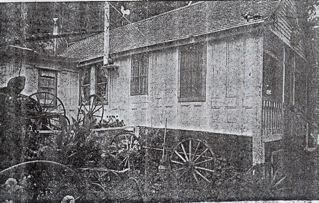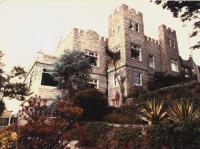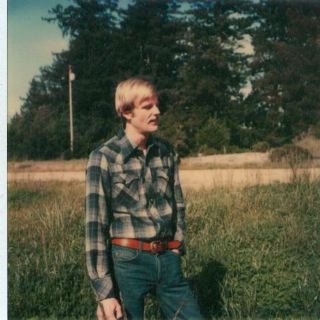 (Photo: Jim Wickett, John’s son–posing on the Skyline property, about 1980).
(Photo: Jim Wickett, John’s son–posing on the Skyline property, about 1980).
John Wickett’s son, Jim, wasn’t kidding when he told his dad it was time for a change on the Skyline property. “Things have gone too far here,” he said.
It was time for a fresh start. John told me that “The “Flower Children” era was wilting. Jim organized a non-profit corporation called ‘Starr Hill Academy for Anything’. He converted a sawmill into his private residence.”
John proudly added that his son’s Starr Hill Academy “started to do some real good–there was less of the hippie element around and Jim had schoolchildren going up there. Students could see the remains of a sawmill and what the outdoor life was like.”
In the meantime, Jim, who was studying for a law degree–which his father believed would be useful when dealing with the county district attorney–was elected president of the Skyline Improvement Association. The deputy sheriff’s badly which he now carried “gave him a little more control over the outsiders,” explained John.
Jim became active with the Kings Mountain Fire District. A fire truck was parked on the property in return for maintaining it.
In his effort to clean up the property once and for all, Jim Wickett removed the structures that were eyesores. And as the buildings disappeared, so did the people. Jim plowed the land and planted new grass seed. “He got more into the ecology deal,” John said, “returning things to their natural state.”
When he looked back on the 1960s, John Wickett confessed: “We had so many people around for so long that my son gradually tired of the responsibility…I got so ‘relaxed’ I used to tell anybody, ‘Sure, go up there, have your company picnics, make yourselves at home….”
Eventually most of the land was sold off–and by 1979 the Wicketts owned about 500 of the original 4,400 acres.

